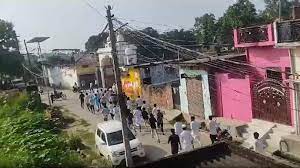How Ram Janmabhoomi and Gyanvapi were shadowed by Mulayam Singh Yadav
The Varanasi District Court, on Wednesday, granted permission to adherents of Hinduism to partake in devotions within the securely enclosed subterranean chamber of the Gyanvapi mosque. An ‘aarti’ and puja were conducted on the same Wednesday night.

The pronouncement of the Varanasi court swiftly followed the ‘pran pratishtha’ ceremony of the Ram Lalla idol at the Ram Mandir in Ayodhya, transpiring within a fortnight.
The Varanasi Gyanvapi mosque occupies a contentious location, akin to the Ayodhya Ram Janmabhoomi, predating the landmark Supreme Court decree of 2019.
The disputes involving these two locations share a common thread, namely the late Samajwadi Party luminary Mulayam Singh Yadav.
MULAYAM SECURED THE SEALING OF GYANVAPI ‘TEHKHANA’ Before 1993, customary aarti and puja ceremonies were regularly conducted in the subterranean chamber known as ‘Vyasji ka tehkhana’ at the Gyanvapi mosque in Varanasi, Uttar Pradesh.
According to accounts, the chamber derives its name from the Vyas family, who presided over puja rituals in the same location for more than two centuries.
In December 1993, Mulayam Singh Yadav orchestrated the cessation of these religious observances, erecting a steel enclosure without any judicial mandate, thereby terminating the puja, as stated in a court petition by Shailendra Vyas, as reported by The Times of India.
The mosque committee, however, refutes claims of any worship transpiring in the chamber situated between the Nandi statue and the wazukhana of the mosque.
Hindu adherents assert that the Gyanvapi mosque stands upon the ruins of an ancient temple. The historical narrative of the site spans over 800 years, marked by conflicts, devastation, and reconstruction efforts.
According to Advocate Vishnu Shankar Jain, representing the Hindu side in the Gyanvapi case, a substantial Hindu temple occupied the Gyanvapi mosque complex, as per a survey report by the Archaeological Survey of India (ASI) presented on January 25.
Yugeshwar Kaushal, a scholar specializing in South Asian Studies, contends that Maharaja Jayachandra erected a grand temple at the site following his coronation around 1170-89 AD.
Mughal emperor Aurangzeb is believed to have dismantled the Kashi Vishweshwar temple in 1669, constructing the present-day Gyanvapi mosque atop its remnants.
Reports indicate that one of the four chambers in the compound still belongs to the Vyas family.
Mulayam Singh Yadav, upon assuming the role of Uttar Pradesh Chief Minister in December 1993, halted the worship in the chamber, citing concerns for law and order as justification.
MULAYAM SINGH’S CONNECTION TO AYODHYA RAMJANMABHOOMI Mulayam Singh Yadav served as the Chief Minister of Uttar Pradesh in October 1990 when the Vishwa Hindu Parishad (VHP) organized a massive ‘kar seva’ for the construction of the Ram Mandir at the then-disputed Ram Janmabhoomi site in Ayodhya.
In response, CM Mulayam Singh Yadav deployed approximately 28,000 personnel of the Uttar Pradesh Armed Constabulary in Ayodhya on October 30, 1990, to thwart the VHP’s Ram Mandir ‘kar seva.’
“Ayodhya mein parinda bhi par nahi maar sakta,” proclaimed Mulayam Singh Yadav.
Despite official records citing 20 casualties in the police firing ordered by Mulayam on October 30 and November 2, eyewitnesses claim a much higher toll.
A journalist based in Ayodhya, who documented the assault on karsevaks, asserts that volunteers were fired upon even from a helicopter.
A few months later, in 1991, the BJP’s Kalyan Singh came to power in Uttar Pradesh. Over a year later, on December 6, 1992, the Babri Masjid was demolished, leading to the dismissal of the BJP government in Uttar Pradesh by the Union government of PV Narasimha Rao.
The state remained under President’s rule for a year, and in the subsequent elections, Mulayam Singh returned to power.
In 1993, just a few years after ordering the police to open fire on Ayodhya Ram Mandir karsevaks, Mulayam Singh halted worship at the ‘Vyasji ka tehkhana’ at the Gyanvapi mosque in Varanasi, casting a profound influence over both the Gyanvapi and the Ram Janmabhoomi in Ayodhya. Nevertheless, a splendid Ram temple now stands in Ayodhya, and the ASI report, along with the district court judgment, has provided a significant boost for the Hindu petitioners.







